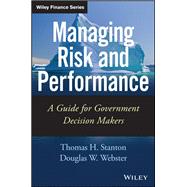Federal agencies increasingly recognize the importance of active risk management to help ensure that they can carry out their missions. High impact events, once thought to occur only rarely, now occur with surprising frequency. Managing Risk in Government Agencies and Programs provides insight into the increasingly critical role of effective risk management, while offering analytical tools and promising practices that can help improve the quality of risk management in government organizations.
- Includes chapters that contribute to the knowledge of government executives and managers who want to establish or implement risk management, and especially Enterprise Risk Management (ERM), in their agencies
- Features chapters written by federal risk managers, public administration practitioners, and scholars
Showing government officials how to improve their organization's risk management capabilities, Managing Risk in Government Agencies and Programs meets a growing demand from federal departments and agencies that find themselves increasingly embarrassed by risky events that raise questions about their ability to carry out their missions.









